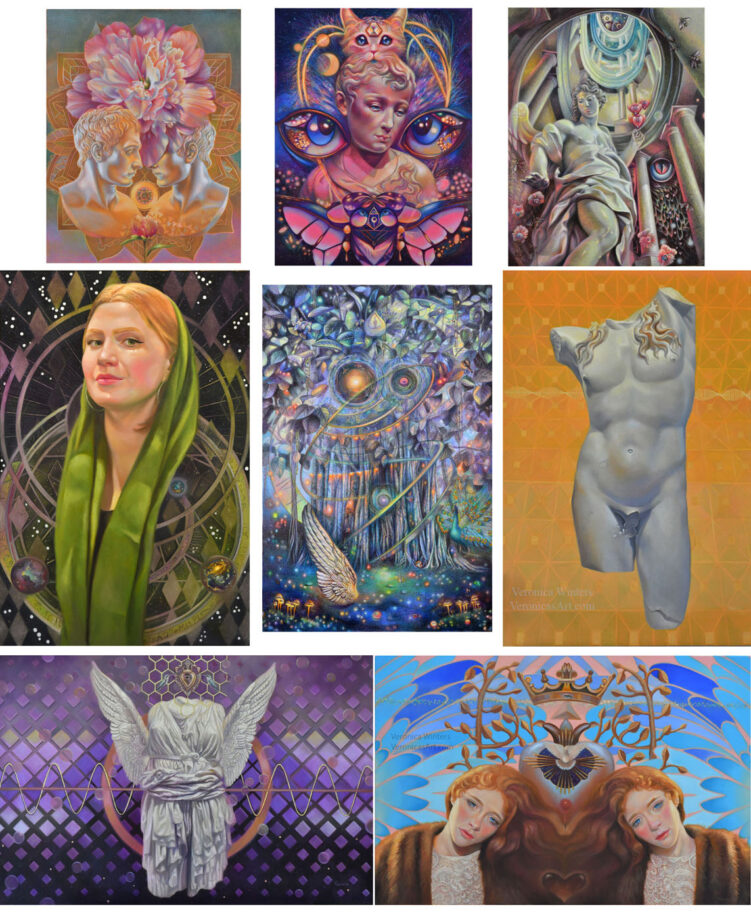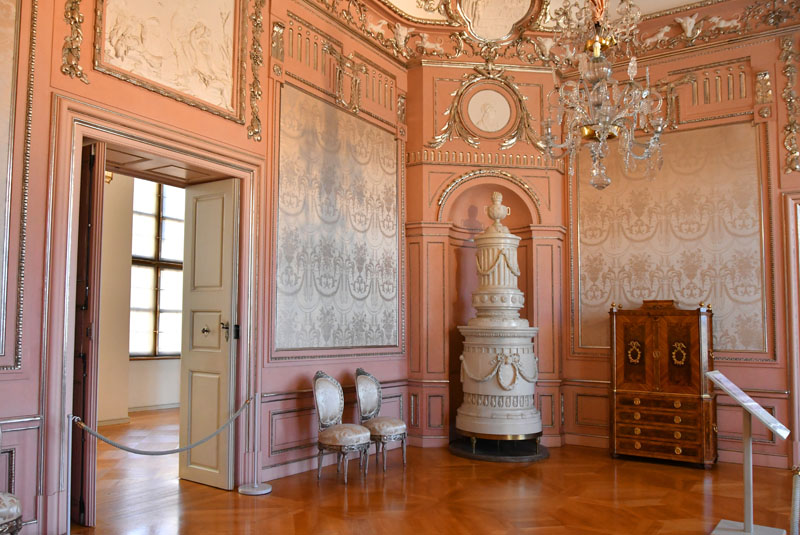
My husband and I traveled the romantic road in Germany and this palace was a great start. The Würzburg Residence’s exterior is reminiscent of French Chateau architecture and features opulent rooms in Baroque and “Würzburg rococo” styles. It’s a feast for the eyes if you feel inspired by the visual beauty. Constructed in the 18th century, this architectural marvel emerged from the genius of Balthasar Neumann. Unlike many other European palaces, the Würzburg Residence was built in its entirety within one generation.
#1 A perfect blend of Baroque architecture and Rococo style
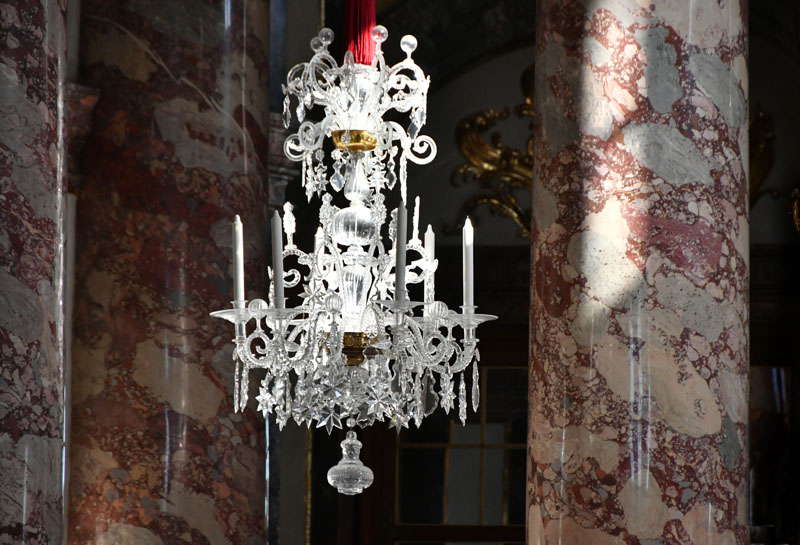
Commissioned by Prince-Bishop Johann Philipp Franz von Schönborn (reigned 1755-1779), the Würzburg Residence is a must-see palace! Its so beautiful and the Mirror Cabinet is one-of-a-kind room that I’ve never seen before. It features exuberant decoration of white stucco, gold leaf, sculpture, color and the reverse glass painting giving the room magical appeal. Nearly demolished during the World War II, it was reconstructed to its former glory of lavish opulence.
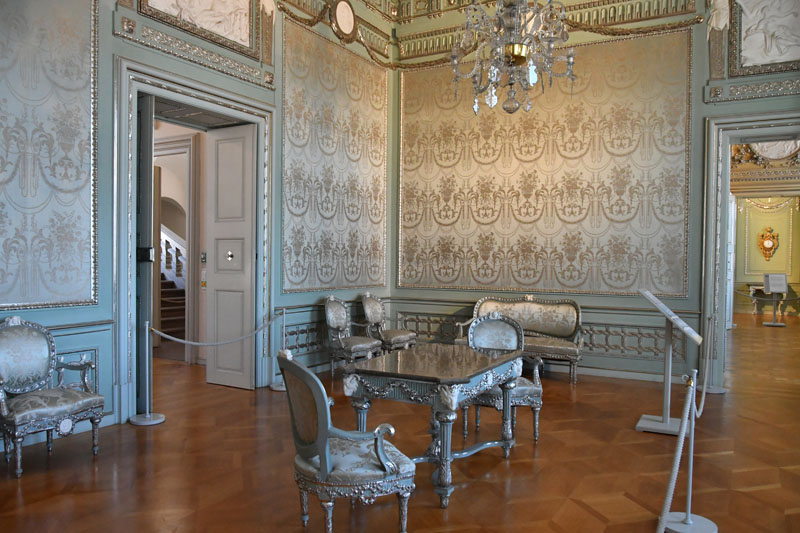
The court architect, Balthasar Neumann (born in 1687) oversaw the construction project that would span nearly 24 years. Neumann, merged the elements of Baroque and Rococo styles in one palace. Neumann worked with top architects of Germany and France – Lucas von Hildebrandt, Maximilian von Welsch, Robert de Cotte and Germain Boffrand, and many artists under the guidance of Antonio Bossi. Johann Wolfgang van der Auwera from Würzburg and Georg Adam Guthmann were the gifted sculptors and woodcarvers, and Giovanni Battista Tiepolo painted the frescoes in the 18th century.
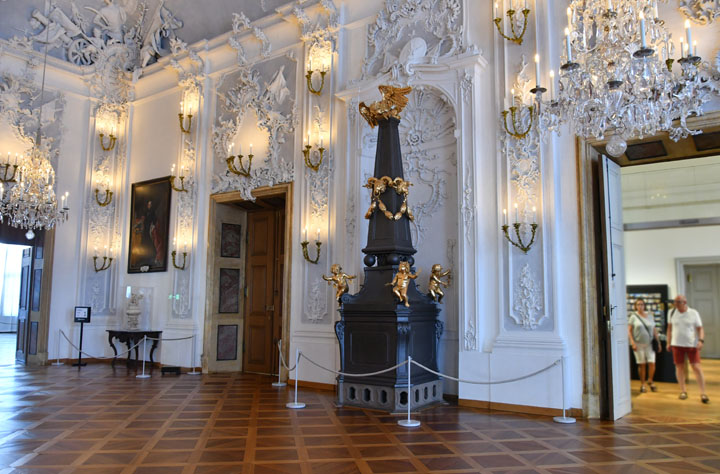
What is the difference between Baroque style and Rococo?
Baroque art is a style of art that originated in Italy in the late 16th century and spread throughout Europe in the 17th and 18th centuries. It’s known for its dramatic, emotional, exuberant impact and exaggerated movement of figures. Baroque artists used a variety of techniques to create their art, including exaggerated movement, high contrast, twisting and turning figures and elements, and rich color palettes. Baroque architecture and art features the opulence and exuberance that contrasts medieval modesty in art.
Rococo style is a later development of Baroque art that emerged in France in the early 18th century. It’s known for its lightness, elegance, and playfulness. Rococo artists often used soft, pastel colors, curved lines, and elaborate ornamentation in their works similar to the Baroque art.
This table summarizes some of the key differences between Baroque art and Rococo style:
| Characteristic | Baroque art | Rococo style |
|---|---|---|
| Time period | 17th and 18th centuries | 18th century |
| Origin | Italy | France |
| Overall style | Dramatic, emotional, and grandiose | Light, elegant, and playful |
| Subject matter | Often religious, but also mythological and historical | Often secular, depicting scenes of everyday life and leisure |
| Color palette | Rich and vibrant | Soft and pastel |
| Lines and shapes | Bold and angular | Curved and delicate |
| Ornamentation | Elaborate and ornate | More restrained and elegant |
Some examples of Baroque art include:
- The Rape of the Sabines by Peter Paul Rubens
- The Ecstasy of Saint Teresa by Gian Lorenzo Bernini
- The Palace of Versailles in France
- The Trevi Fountain in Rome
Some examples of Rococo style include:
- The Swing by Jean-Honoré Fragonard
- The Pilgrimage to Cythera by Antoine Watteau
- The Amalienburg in Munich
- The Schönbrunn Palace in Vienna
#2 The beauty of reverse glass painting at the Mirror Cabinet
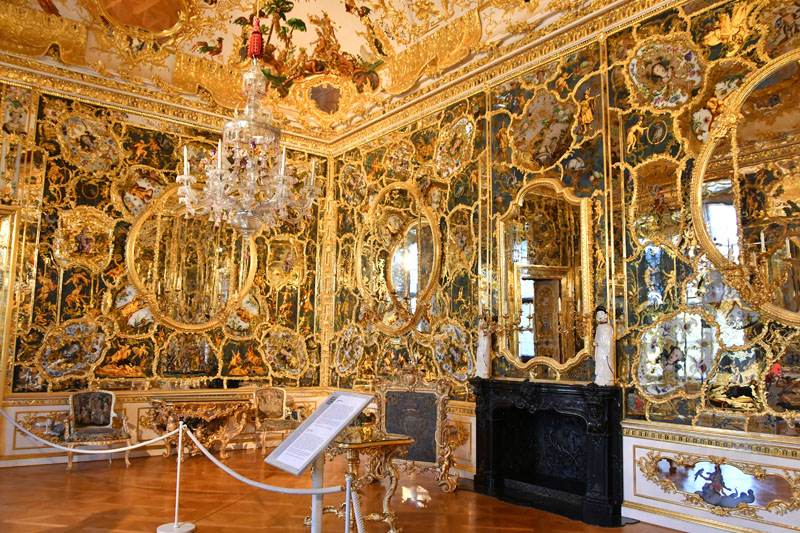
The recreation of the Mirror Cabinet
If you walk through the rooms, you’ll see pictures taken after the WWII showing the ruins of the city. The palace was reconstructed based on written materials, fragments and drawings.
The precious wall decoration of the Mirror Cabinet with the reverse glass painting created in 1740-1745 was almost completely destroyed in 1945. Only the furniture, the chandeliers and two door wings had been stored beforehand in a safe place. Since the glass plates had been plastered directly onto the wall, the first one had broken when an attempt was made to remove it. The reconstruction was based primarily on this original fragment, an extremely detailed painting of the room by Georg Dehn and numerous color slides taken by Carl Lamb in 1944.
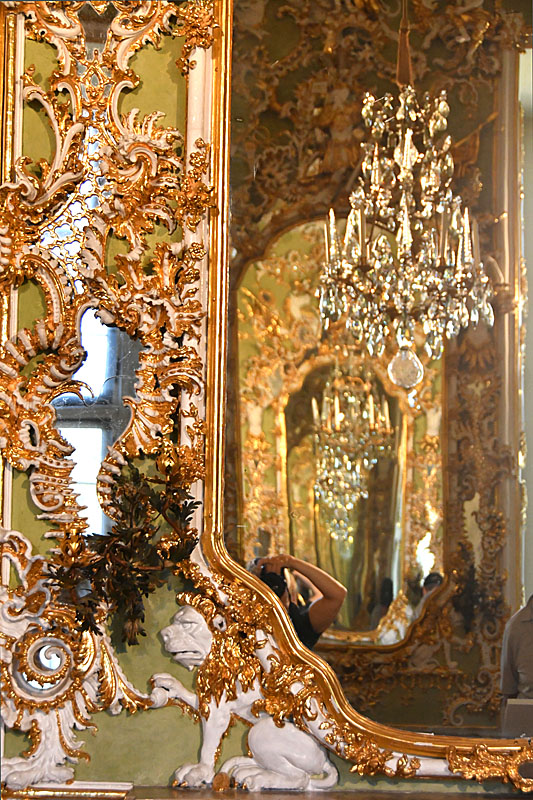
From 1979-1987 it was thus possible to recreate the entire interior, imitating the old techniques. The stuccowork alone took 27,000 hours to complete, while the gilders spent 30,000 hours applying 2.5 kilos of gold leaf. The artist Wolfgang Lenz reconstructed the complex reverse glass painting.
On 16 March 1945 Würzburg suffered the same fate as Rotterdam, Coventry, Hamburg or Dresden. Within 17 minutes, 225 Lancaster bombers of the Royal Air Force dropped about 400 tones of high-explosive bombs and more than 300,000 stick-type incendiary bombs. Würzburg was razed to the ground by a gigantic storm of fire; 90 per cent of the historic city center was destroyed, and at least 5000 people were killed. But this was not the end of the war. Before American Forces reached the banks of the River Main below Marienberg Fortress on 2 April, the German Armed Forces blew up all bridges and prepared to defend the ruins of the city. Only after heavy artillery fire and three days of fierce fighting, with numerous military and civilian casualties, were American troops able to capture the whole of Würzburg on 6 April 1945.
Source: taken from the writing at the museum
The reverse glass painting:
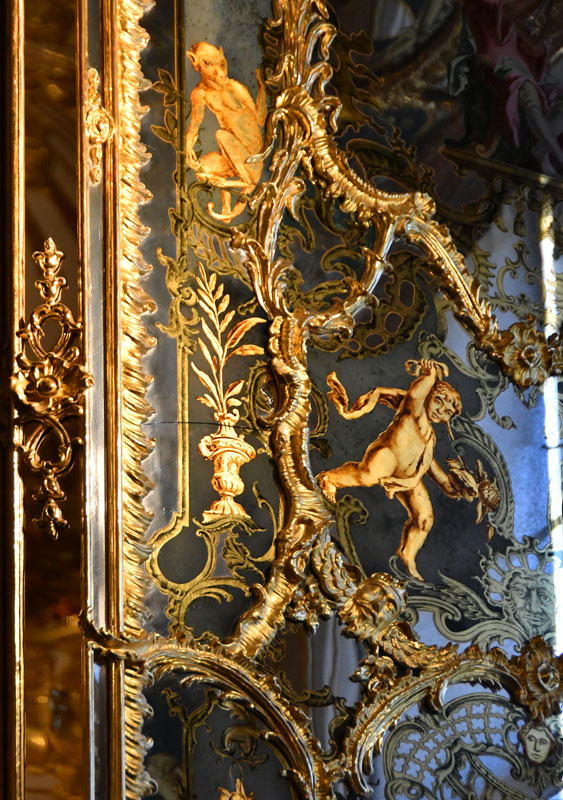
What is the reverse glass painting?
The Reverse glass painting, also known as verre églomisé, is a traditional decorative art technique where a design is painted on the backside of a piece of glass or glass plates, typically using oil or acrylic paints. The term “reverse” comes from the fact that the painting is viewed through the glass from the front, which is the opposite of traditional painting on canvas or other surfaces. The technique allows for a unique luminosity and depth to the colors due to the transparency of the glass, creating a distinct visual effect. To create a reverse glass painting, the artist begins by tracing a design onto the back of a piece of glass. The design is then painted in reverse order, starting with the smallest and most detailed elements and working towards the background. Once the painting is complete, the glass is flipped over, varnished and framed so that the image can be viewed from the front.
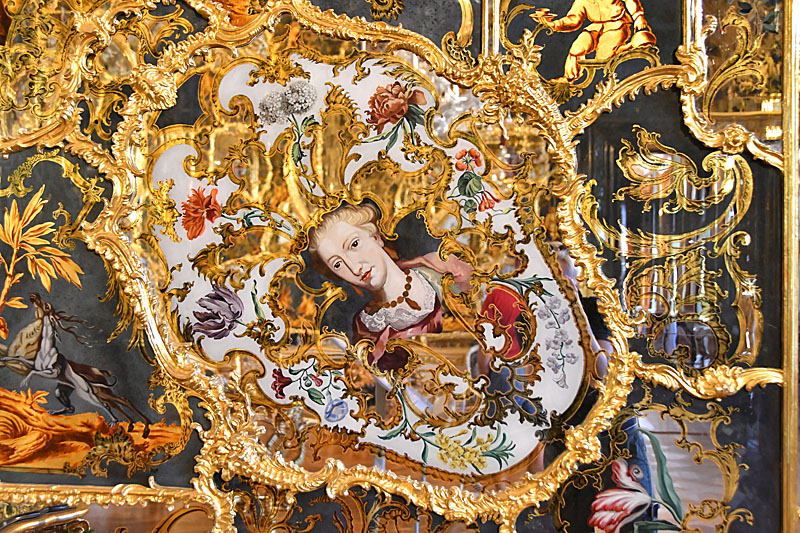
The history of reverse glass painting can be traced back to at least the 10th century in China. The earliest known examples of reverse glass paintings from China are religious icons, which were often used to decorate temples and shrines. Reverse glass painting was also popular in Europe during the Middle Ages and Renaissance. During this time, it was used to create religious stained glass windows, devotional panels, and mirrors. In the 17th and 18th centuries, reverse glass painting became increasingly popular as a folk art form. It was especially popular in Germany, Switzerland, and Poland, where it was used to create decorative objects for the home, such as clocks, picture frames, and furniture.
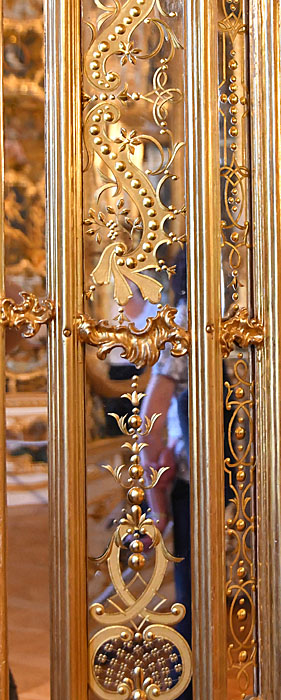
#3 Artistic inspiration behind opulent rooms & gardens
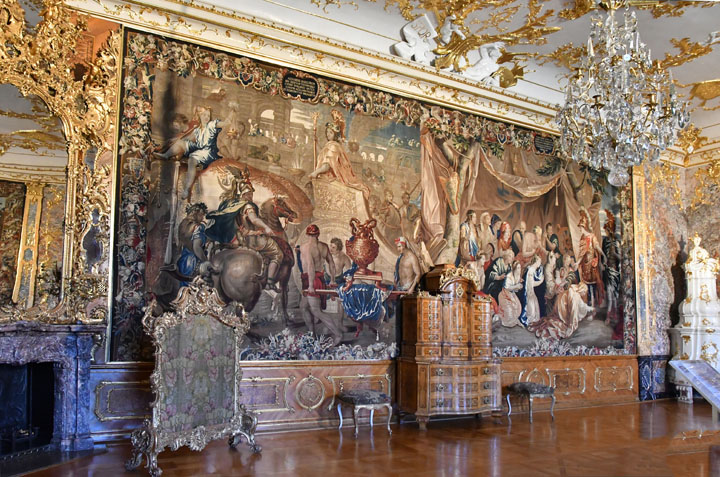
The Würzburg Residence reminded me of the Hermitage and the Catherine Palace with its Grand Staircase consisting of twisting figures and white staircase. Designed by the court architect-Neumann, the rooms have unique coloring of light, gentle hues and absolutely gorgeous stucco work. Paired with crystal chandeliers and frescoes, this palace stands at par with top palaces found in Europe.
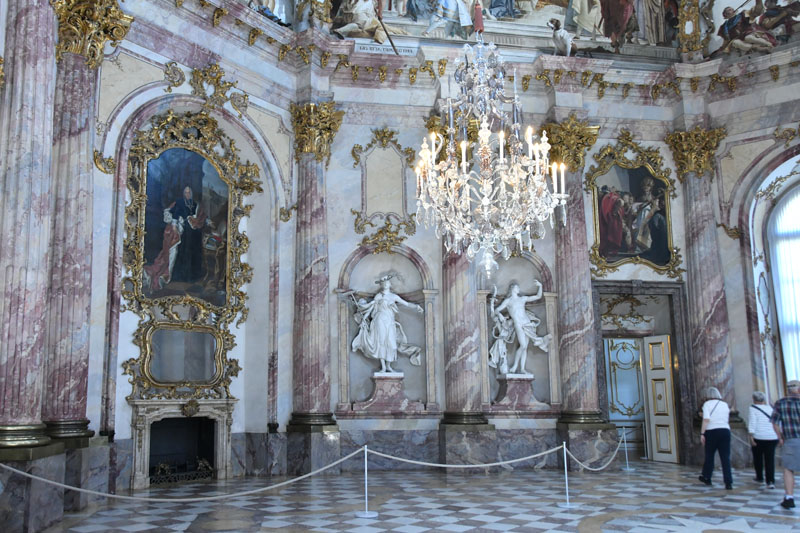
The Imperial Hall features stunning celestial frescoes by Giovanni Battista Tiepolo. The Court Chapel consists of Baroque-style columns, sculpture and art that seem to be transported from the St. Peter’s Basilica’s interior. Lavish, ethereal creations created by artist- Antonio Giuseppe Bossi- take a while to process because of its beautiful interplay of light and shadow, color and air.
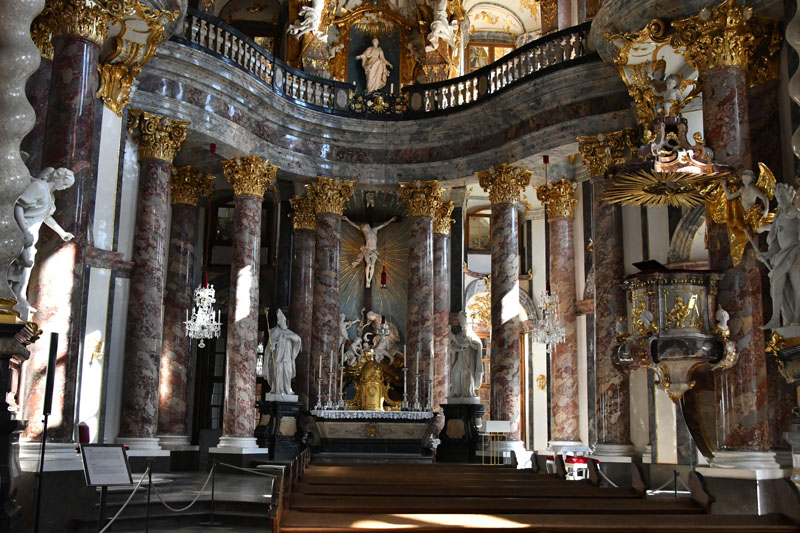
The 3-D floor design:
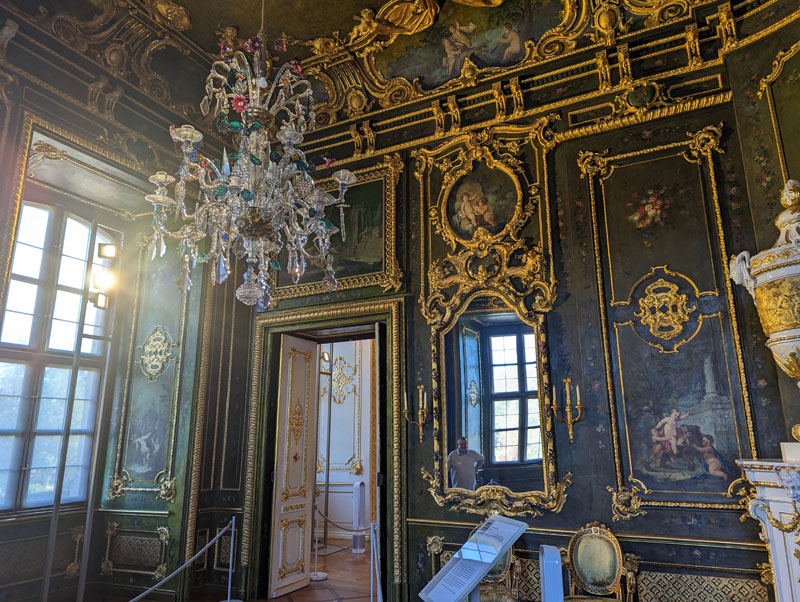
Found in the Green Lacquered Room, the three-dimensional parquet design is a fascinating circular pattern of inlaid light and dark exotic woods. The floor was destroyed completely in the WWII and it took years to understand the pattern to reconstruct it out of 8 different kinds of woods. The floor design is similar to the Italian designs found in other European palaces.
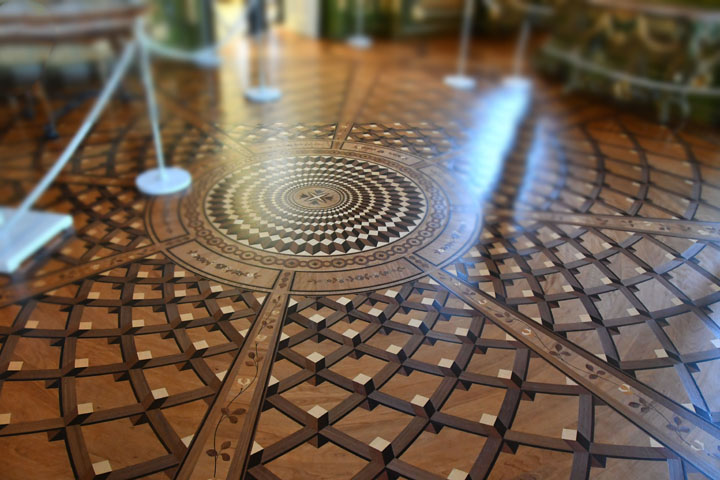
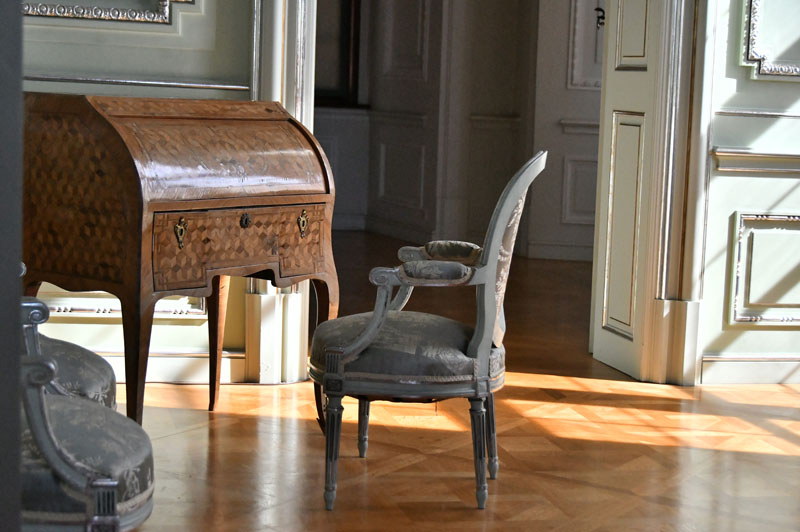
The Garden of the Residence
Don’t forget to visit beautiful garden of the Residence by Balthasar Neumann designed during the reign of the Prince Bishop of Würzburg, Adam Friedrich von Seinsheim. Created by the Johann Prokop Mayer (1735-1804), the grounds are reminiscent of French design. It’s well-maintained and is a nice spot to take pictures.
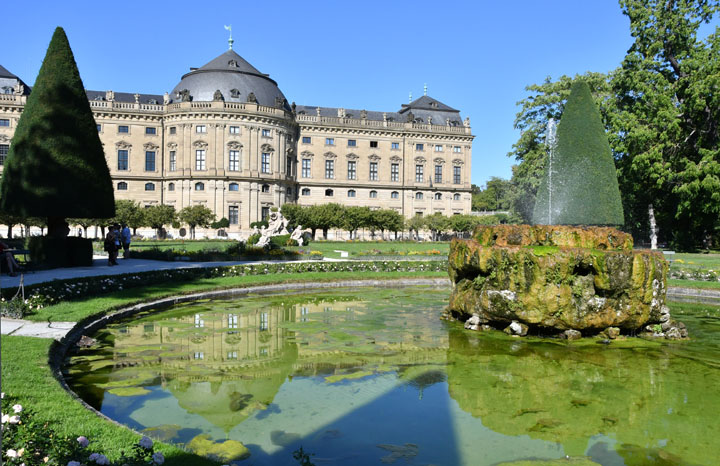
Würzburg Residence tickets and parking: There is a large parking lot available in front of the Residence. Plus street parking is easy too. I visited the palace in early September 2023 and it wasn’t crowded at all. The single adult ticket was under $10 and they give great discounts to children, students, etc. They don’t allow any kind of bag/backpack inside the palace and so you need to have one euro to use their free locker. The administration also offers Würzburg Residence tours.
Official website of the palace: https://www.residenz-wuerzburg.de/englisch/residenz/index.htm
Address: Residenzpl. 2, 97070 Würzburg, Germany
Photo credit:
All photos are taken by Veronica Winters posted with permission of the Bavarian Palace Administration. No copying or re-print is allowed without a written permission from both parties. Courtesy of the Bavarian Palace Administration www.schloesser.bayern.de
Shop visionary art for sale
